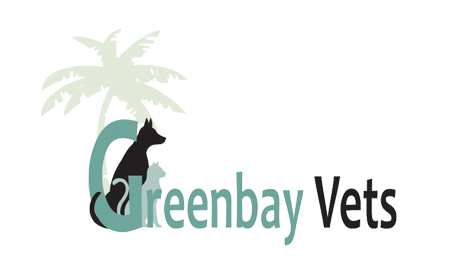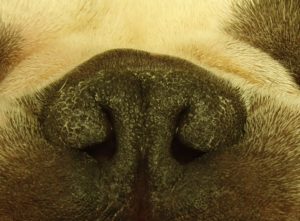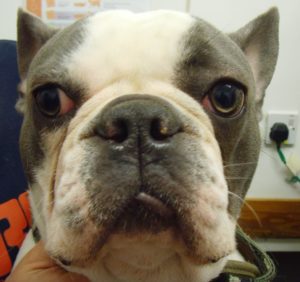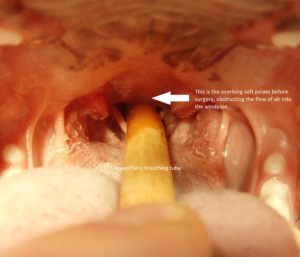
BOAS stands for Brachycephalic Obstructive Airway Syndrome. This is a fairly common condition in short nosed breeds of dog e.g. French Bulldogs, British Bulldogs and Pugs, and can also affect some breeds of cat e.g. Persians. Pets can be affected to different degrees.
What is BOAS?
BOAS is caused by factors which lead to an obstruction to the free flow of air through the nose and throat.
There are a number of primary factors, which are present from a young age in some patients of affected breeds. These include:
- Stenotic nares – narrow nostrils. This means less air can enter the nose with each breath.
- Aberrant and crowded nasal turbinates. Turbinates are the network of bones and tissues within the nasal cavity.
- Over long and thick soft palate. The soft palate is the fleshy part towards the back of the roof of the mouth. If it is too long or thick it prevents air flowing properly.
- Hypoplastic trachea – this means the windpipe is narrower than it should be.
Progressive deterioration to the airway can lead to secondary factors such as laryngeal collapse (the larynx loses its rigidity and collapses into the airway), and gastrointestinal signs such as regurgitation, acid reflux, vomiting, and drooling.
What are the signs of BOAS?
The signs of BOAS are varied and can range in severity, including some or all of the following:
- Snorting or snoring at rest or during exercise
- Reduced or poor exercise tolerance
- Prolonged recovery after exercise or following exposure to warmer conditions
- Poor tolerance to heat
- Restlessness at night
- Sleep apnoea
- Retching, regurgitation, vomiting
- In severe cases, collapse due to lack of air
If you are worried your pet is showing any of these signs, get them booked in for a check up with one of our vets. Not all dogs with BOAS need surgery, but if they do the outcome is better if the surgery is performed earlier in life.
What is BOAS surgery?
Vet John is an RCVS Advanced Practitioner in Surgery and has been performing BOAS surgery for many years. BOAS surgery aims to improve air flow. The most common procedures John performs are those to widen the nostrils, allowing more air to flow in and out, and to shorten an over-long soft palate.
The surgery is not without risks, but most patients do well and have a better quality of life as a result.
Unfortunately it is not possible to correct all of the challenges faced by these patients. As such they may still have some symptoms after surgery, but early surgery helps prevent some of the secondary changes that can lead to more severe obstruction later in life.



